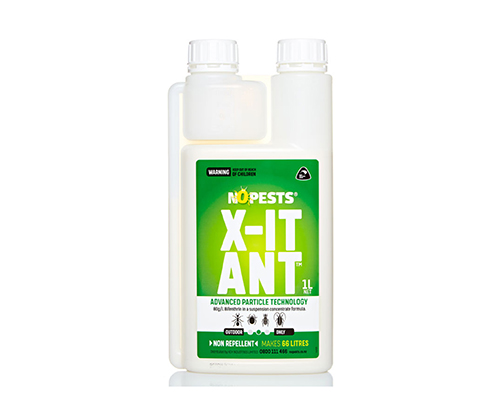

Choose Your Weapon for the Insect Battle
When it comes to finding the best way to control the range of crawling pests inside your house, buildings and outside areas, it is important to know what kind of insecticide you need.
The most common crawling household pests are ants, cockroaches, silverfish, carpet beetles, mites, springtails, fleas, ticks, cluster flies, bed bugs, white-tailed spiders and myriad other spider species. Despite a large number of different active ingredients, all insecticides fall into one of two categories – repellent or non-repellent. Unfortunately, many insecticides don’t state this on the label, which can lead to the wrong product being used for the wrong pest. Most insecticides claim efficacy on a wide range of pests, but if they are repellent then the only insects killed will be the ones that come in direct contact with the chemical as it is applied. Those not in target range at application (this can be most of the population) will avoid the sprayed area because of its high level of repellence.
In general, only a small percentage of any population is visible at any one time. To ensure a pest population eventually encounters a sprayed surface, it is important to apply a non-repellent insecticide on crawling insects. This should last for many months on the sprayed surface and still be efficacious even on porous surfaces. Many formulations such as Emulsifiable Concentrates (ECs) are absorbed into porous surfaces and have limited residual activity. Insecticides that have the best activity on all applied surfaces are water-based suspension concentrates (SCs). These are also less likely to damage paint and wallpaper when applied.


Spiders (arachnids) fall into two categories, web builders and non-web builders. They can be controlled easily if the correct product is used. Web building spiders are generally fixed to one location and near their web. They are an easy target and both repellent and non-repellent insecticides will be equally effective in controlling them. White-tailed spiders are more problematic as they hunt at night and seek dark recesses during daylight hours. They are able to move on a silk thread from one height to another, so repellent insecticides will cause them to deviate from the sprayed area, limiting control. For this reason, white-tailed spiders should be treated the same way as crawling insects, with their crawl zones and hunting territory treated with a non-repellent insecticide.
For flying insects and general spider control, No Pests Bug Spray will offer good control. For crawling insects and white-tailed spider control, No Pests Crawling Insect Spray for indoor applications and No Pests X-it Ant for outdoor use have been designed specifically for New Zealand conditions. They are suspension concentrates with no repellence and have a high level of efficacy. A feature of the two sprays is that 90 percent of the active ingredient particles are less than 10 microns in diameter. This small size allows for optimum spray contact and assists in rapid uptake of the insecticide by the insect.
If you use the same sprayer to apply repellent and non-repellent insecticides, you will need to clean the sprayer well to avoid repellents tainting the non repellent insecticides. The best solution is to have a sprayer dedicated to applying nonrepellents. If that is not possible, clean your sprayer by filling with an enzyme-based washing powder and leaving it to soak overnight. Rinse thoroughly before use.


